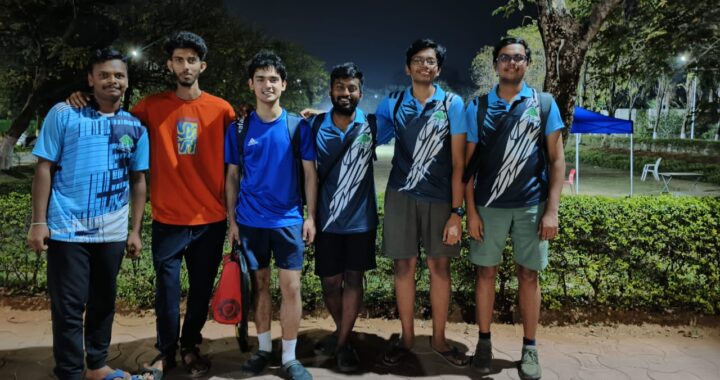Code Wars

With the nature of war changing, the Indian government has chosen to boost up its cyber warfare capabilities by incorporating artificial intelligence (AI) into its development endeavours. This decision was arrived at after the Galwan Valley clash in the year 2020. On the night of June 15/16 June last year, Ladakh’s Galwan Valley witnessed a violent clash between the Armies of India and China. The violent faceoff took place during the deescalation process underway in the Galwan Valley and resulted in “casualties on both sides”, the Army stated.
The Indian government is grappling with the reality that the Chinese military is just as well prepared for cyber warfare as they are for conducting pitched battles on the land. Reports that Chinese hackers had attacked India’s power grid immediately after the clash are an indication of how the nature of war is changing, experts say. The chief of defence staff also stated that India is working on beefing up its cyber capabilities, but admitted that it is far behind China in this domain of warfare at the moment.
In order to bridge this gap, the government is taking the help of academic institutions such as the International Institute of Information Technology, Hyderabad (IIITH), and defence institutions such as the Secunderabad based Military College of Electrical & Mechanical Engineering (MCEME).
“We are seeing a lot of AI related requests coming in after the China incursion last year, I think India has realized that China is way ahead when it comes to AI and is trying to bridge this gap”, said Prof. Yalla Veera Prakash, the head of Technology Transfer and Product Labs at IIITH.
AI-Related Work In Recent Years
The Product Labs is an initiative to be able to build complete solutions and products from research. From the early years of the institute, there have been projects from different defence establishments. “A lot of work has happened in the past three years since the Product Labs was started as part of the Technology Transfer Office. Some for enterprises and others to be hived off as startups”, Prof. Ramesh Loganathan, the head of research outreach, proclaims.
In recent years, the institute has worked on a variety of AI and defence related research projects, as well as their applications. IIIT Hyderabad has had more opportunities through various defence public sector enterprises (PSEs) like Bharat Dynamics Ltd (BDL), Bharat Electronics Ltd (BEL), Garden Reach Shipbuilders & Engineers (GRSE), Defence Research and Development Organisation (DRDO), and defence institutes such as the Military College of Electrical & Mechanical Engineering (MCEME). With Bharat Dynamics Ltd, the Product Labs worked on Computer Vision algorithms for a new missile that was being developed. They also worked on a document AI solution for product manuals and design documents for Garden Reach Shipbuilders & Engineers. With Bharat Electronics Ltd, they worked on a project involving information extraction, and another for the Air Force, Prof. Loganathan explained.
The institute has also been selected for the 25 Technology Innovation Hubs (TIH) by the National Mission on Interdisciplinary Cyber-Physical Systems (NMICPS) for developing and promoting data driven technologies and AI & machine learning. IIITH proposes to establish a Technology Innovation Hub for Data Banks, Data Services, and Data Analytics (TIH-Data), to coordinate, integrate and amplify the research in the larger areas of Data Banks, Data Services and Data Analytics under the National Mission on Interdisciplinary Cyber-Physical Systems (NMICPS) scheme. The Hub’s main vision is to become the preeminent reference for datasets for AI researchers all over the world, as well as to develop solutions using these datasets to address population scale challenges with broad societal impact. The Hub is said to place a special emphasis on applications towards the betterment of the society around, along with the translation of technologies into viable products and services, and also promoting startups based on those technologies.
IIIT-H is the only Indian institute in the global consortium of 13 universities and labs participating in FacebookAI’s ambitious Ego4D project that promises to enable experiences straight out of sci-fi. The institute contributes to a one-of-its-kind dataset on first-person Computer Vision. IIITH also houses a Centre of Excellence (CoE) for Artificial Intelligence in missile technology that was set up in mid2019 along with Bharat Dynamics Ltd (BDL).
Current Work
With the Union government’s decision to strengthen its defence capabilities by introducing artificial intelligence (AI) into everything, from missiles to surveillance to shipbuilding, the institute has had a lot of AIrelated requests coming in.
The Product labs is working on using computer vision and imaging to understand various battlefield scenarios said, Prof. Prakash Yalla. This is done with the help of data generated by surveillance cameras that are fitted onto tanks, warheads, and drones. They are also investigating ways to detect mines autonomously and improve the ability to understand and detect targets, both human and inanimate, using computer vision (CV) and machine learning (ML).
Prof. Prakash Yalla said that they are now trying to garner an understanding of various objects, whether they are human or not, to figure out how far it is located, how fast it’s moving, and how threatening or vulnerable it is. Since most of the interest these days from defence is around computer vision, language technologies, and signal processing, all the research, and study involves working with data sets and machine learning based solutions.
According to Prof. Prakash Yalla, the armed forces are also attempting to incorporate artificial intelligence into the use of night vision cameras and the data they generate. The Product Labs is also working on natural language processing and audio signal processing to decipher and translate eavesdropped radio signals of Chinese troops located 2 to 3 km away along the border.
Defence institutions such as the Secunderabad based Military College of Electrical & Mechanical Engineering (MCEME), which is a Centre of Excellence (CoE) for army equipment in AI, has also been working on several projects using AI. MCEME is being developed as a technology innovation hub for AIrelated projects in the Indian army. According to MCEME officials, these include AI based accident prevention, automatically identifying humans from thermal camera feeds, and automatically identifying targets from radar signals, among other things.
“Since most of the projects are transnational in nature, the research paradigm chosen to conduct the study is to apply recent research to build the solutions needed”, Prof. Loganathan explained. Most Product Labs projects include a Faculty member who provides the overall approach for the research, on which the engineers in the Product Labs conduct the study and build the solutions. The professor may occasionally enlist the help of students. The Product Labs includes product managers, user interface designers, and architects, apart from engineers, RAs and students as interns/ RAs. “The Product Labs provides a great opportunity for students to experience research translation, systems, and products’ building” Prof. Loganathan concludes.


 DaveAI
DaveAI  Reels
Reels  IIIT’s Smart Campus Vision
IIIT’s Smart Campus Vision  Seeing That Which Cannot Be Seen
Seeing That Which Cannot Be Seen  Breaking Down The Toughest Photoshoot
Breaking Down The Toughest Photoshoot  Helping Hyderabad ‘Commut’!
Helping Hyderabad ‘Commut’!  A perspective on sports in IIIT
A perspective on sports in IIIT  Paintings of IIIT
Paintings of IIIT  The Tale of Jagruti
The Tale of Jagruti  Cleaning up the Mess?
Cleaning up the Mess?